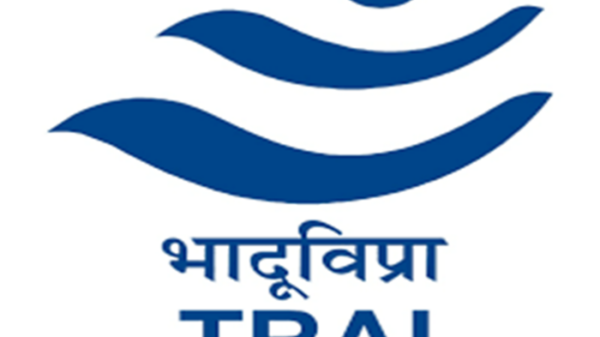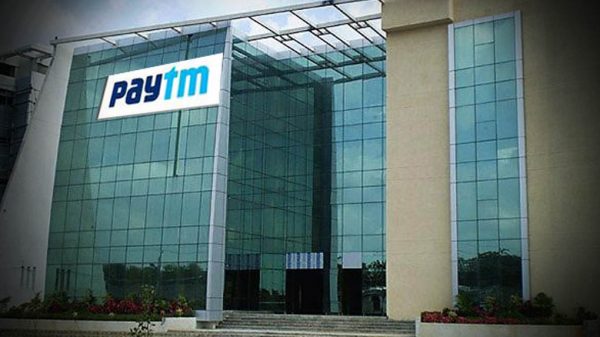By Amba Kak
Part 1 Summary
The regulatory crack down on unfair billing practices in VAS had an impact on profit making in the market, although the extent is still unclear. There was a discernible shift in industry rhetoric, now heralding a shift to data (internet based products) and a focus on creating legitimate demand. A market for music couldn’t survive on duping consumers, especially when pirate markets offered alternatives.
The rhetoric, however, may not necessarily have translated into better practices. In November 2014, MediaNama wrote about wrongful activation complaints increasing from last year even though the number of activations each month is more or less the same. This disturbing revelation points to the fact that the “deterrent” effect of the regulation has not been nearly as effective as it was once thought. It only strengthens calls stricter oversight of the VAS and data market to protect consumer interest.
The “Value Added Scam”
Value Added Services (VAS) is the umbrella term for anything beyond standard mobile services like voice calls and SMS. Music related VAS have long been provided through telecom operators’ networks and include products like ringtones and caller tunes, and services like music download. In 2012, the mobile VAS market in India was valued at INR 26,000 crore, of which more than 30% were music services, dominated by caller tunes1. Sources within the industry estimate that telecom operators made between 12,000-15,000 crores in revenue from 2005 to 2010 through music services alone2.
‘The VAS boom’ was a defining moment in the history of legal music sales, transforming every institution in the mainstream market. But ‘boom’ does this story injustice in that it is as much about profits and consumption as it is about fraudulent billing practices and questioning the legitimacy of demand to begin with. It is a story of how regulation can decisively impact fraud in the market and how the decline of older business models is compelling the music industry to question why.
The growth of music VAS began with ringtone services. “If it had to be pinned to one moment in history, it would be around 2001 when Nokia, the global handset manufacturer, disabled the technology that allowed for forwarding ringtones on the mobile which meant that a legal market could flourish — users had no choice but to buy ringtones.” says Mandar Thakur, ex- General Manager of Soundbuzz India, an online and VAS company. The business started off on the short-code format where consumers could send a text message to “8888” and receive the desired ringtone directly to their phone.
An ecosystem emerges
The stakeholders in the VAS ecosystem today are as follows:
- Content owners (i.e. music labels)
- Content aggregators (buy rights to license, promote and market music catalogues on behalf of content owners)
- VAS companies (who develop the service, also known as technology aggregators)
- Telecom operators (who market the service to consumers as their own VAS product)
Content aggregators such as Hungama, Mauj, Phoneytunes etc. emerged as distinct intermediaries in the VAS business when music VAS was showing first signs of promise. Most music labels didn’t have in-house digital teams to start with and content aggregators filled the gap. Content aggregators committed to the labels that they would maximize their copyright revenues. Music labels such as T-Series signed up a landmark deal with the aggregator Hungama in 2005. Hungama paid T-Series an upfront payment known as a ‘minimum guarantee’ for its content after which the aggregator was free to license and market the content, as it desired. By securing the valuable T-Series catalogue, Hungama was able to build a large distribution network across music services and convince other labels that it was in a position to negotiate best with VAS companies and telecom operators.
As the chart demonstrates, the last mile connection to the consumer is provided by the telecom operator’s network. Telecom operators have been mercenary when it comes to revenue, taking the lion’s share of end user price3. Telecom operators justified this disproportional split in revenues based on the high costs they incur in acquiring the network, integrity of the payment channel, marketing the service as well as the drain on their resources while dealing with customer complaints4. Despite the bulk of revenue going to the telecom operators, the size of the VAS pie more than made up for the other stakeholders. A large market with soaring revenues meant that everyone profited. By 2009, over 60% of the music industry’s revenues were coming from VAS services, the majority from caller tunes.5
Consumers are duped
VAS business was predicted to grow by billions of dollars in the coming years6. Soon enough however, cracks began to show. Complaints of unsolicited activation and renewal of services started mounting. Unhappy customers avoided keeping money in their prepaid accounts out of fear that they would be billed for unsolicited services7. Telecom operators blame their outsourcing of key operational functions and services, like network management and call centers, to VAS companies8. VAS companies were focused on getting as many subscribers on board as possible in order to extract maximum revenues, and resorted to rampant consumer fraud9. Consumers were getting billed even without having the necessary credit10. The VAS companies controlled subscription procedures and customer billing was under the telecos. VAS companies had no information on whether the pre-paid customer had any credit on their phone11.
If you ask industry insiders what exactly went wrong, their answer is greed. Both, VAS companies and telecom operators tried to maximize their revenues at the customers cost. Insiders are quick to mention that fraudulent practices were not pervasive but only a ‘few bad eggs’ ruined the market. Nikhil Pahwa, a leading analyst on digital media disagrees, “I would be surprised if there is a single content distributor that wasn’t involved in this false billing scam or had not at some point been blacklisted. I have even heard of telecos logs being fudged in order to justify false billing.”
TRAI takes action
A number of VAS companies were blacklisted by TRAI but reportedly re-emerged under different names through subsidiary companies to escape regulation12. In July 2012, the TRAI issued a series of guidelines aimed at addressing irregularities in the activation and renewal of VAS services, especially on prepaid mobile connections13.
Telecom operators resisted these guidelines through a petition before the dispute resolution authority but lost the appeal in late 201214. In 2013, the TRAI issued another set of guidelines with the mandate that telecom operators need to provide a system that solicits two levels of consent from consumers before it is enabled15.
The scale of the fraud
The telecom regulator in India, TRAI, received 672 consumer complaints regarding activation of VAS services without consent16. This figure is unlikely to even scratch the surface of actual instance. The impact of TRAI regulations have had on the industry could vindicate that the level of unsolicited activation was rampant. Neeraj Roy, CEO of Hungama Digital, admitted in an industry event that the new regulations resulted in approximately 65% shrinkage of their subscriber base17. India revenues for On Mobile Global declined 19.6% in 2012-201318.
These facts and figures compel a thorough scrutiny of the ‘VAS boom’. Perhaps it is not possible to ascertain the extent of customer fraud committed by VAS companies. In its wake, companies were unequivocal that legitimate demand would have to be created, one consumer at a time. Although the teleco channel helped create mass demand, a legitimate market for music cannot survive by duping consumers, especially when the side-loading market offered efficient alternatives. Regulation has tried to convey this to the industry by an efficient set of guidelines for legitimate music distribution on the networks.
What’s next? VAS to Data
Even as traditional VAS products wither away, the mobile internet space is growing steadily. Given limited memory capacity and a device lifetime of approximately 18 months, storage of files will no longer be desired. The most popular method of accessing music is predicted to soon be streaming via the mobile phone. Neeraj Roy is clear about the new scenario, “From the voice (IVR) revolution we will now head to the internet revolution. This itself will bring legitimate consumption”19.
Arguably, it was the telecom operators’ payment channel which enabled the mass-market financial success of caller tunes and other VAS products. Due to sheer convenience and availability, there is an increased chance of adopting those services that either come pre-installed into the device and/or are pushed by the telecom operator. Increasingly, these online platforms are forming partnerships with telecom operators (for eg. Idea’s tie-up with Dhingana).
Need for stricter oversight?
And as online platforms gain access to the ‘mobile wallet’, the lessons from the VAS episode are more relevant than ever. In fact, in November 2014, MediaNama reported TRAI data which suggests that wrongful activation complaints have actually increased from last year even though the number of activations each month is more or less the same. This disturbing revelation points to the fact that the “deterrent” effect of the regulation has not been nearly as effective as it was once thought. It only strengthens calls stricter oversight of both the VAS and mobile internet market to protect consumer interest.
****
References:
- IAMAI MVAS Report 2012, Copy on file with author.
- Interview with Mandar Thakur, CEO, Times Music; ex-General Manager, Soundbuzz, August 2013.
- Anonymous interviews with music labels and VAS platforms. Corroborated by Guest Author, How Mobile Music Revenues Are Split In India, May 20th, 2009 available at http://www.medianama.com/2009/05/223-guestpost-how-mobile-music-revenues-are-split-in-india/. This revenue share is exactly opposite of the situation in US, Europe, China and Japan which is a 70%-30% split of post tax revenue in favour of the aggregator/VAS platform. The difference is that the telecom operator plays no role in promotion and customer acquisition. Vodafone, a leading telecom company, has announced it will start to offer a similar offer in India starting this year. See Dev Khare Mobile Rev-Share Changes Might Spark a Fire, March 6th, 2012, available at http://www.medianama.com/2012/03/223-mobile-rev-share-changes-might-spark-a-fire/(Last visited on 3 December, 2012).
- Interview with Mahesh Uppal, Telecom consultant.
- Data provided by Phonographic Performance Limited (PPL), reported in Music Broadcast Pvt. Ltd. v. Phonographic Performance Ltd, decision date 25th August 2010, case no. 1, 2 AND 6 of 2002.
- James Barton, Mobile entertainment industry in India to grow to $5 billion by 2015, 7th April 2011 http://www.developingtelecoms.com/mobile-entertainment-industry-in-india-to-grow-to-5-billion-by-2015.html ; Bureau, Mobile value-added services market will touch $9.5 b in 2 years, The Hindu, March 25th 2013 available at http://www.thehindubusinessline.com/industry-and-economy/info-tech/mobile-valueadded-services-market-will-touch-95-b-in-2-years/article4546790.ece
- Nikhil Pahwa, Airtel Issues New Guidelines For Billing For Subscription Services, June 10th 2011 available at http://www.medianama.com/2011/06/223-airtel-issues-new-guidelines-for-billing-for-subscription-services/
- Thomas K Thomas, No value for your money, The Hindu, available at http://www.thehindubusinessline.com/features/eworld/no-value-for-your-money/article3509355.ece.
- Ibid.
- Ibid.
- Anonymous interview with VAS platform executive, July 2013.
- Thomas K Thomas, supra note 59.
- TRAI Direction F.No.305-15/2011-QoS, July 2012, available at http://www.auspi.in/pdf/direction_VAS_fina4-7-2011.pdf. For example, it mandated that service providers must obtain confirmation from subscribers through SMS or e-mail or FAX or in writing within twenty four hours of activation of VAS and charge the subscriber only if it is received from him for the service and discontinue the service if no confirmation is received from him, in case of the service being activated on an outbound or inbound call. The TRAI also instructed them to ask for subscriber’s consent for renewal in case he had insufficient credit balance in his mobile account.
- Vikas SN, TDSAT Rejects Telco’s Petition Against TRAI’s VAS Guidelines, November 5th 2012. available at http://www.medianama.com/2012/11/223-tdsat-rejects-telcos-petition-against-trais-vas-guidelines/
- PTI, TRAI tightens norms for mobile VAS, The Times of India, July 11th 2013, available at http://articles.timesofindia.indiatimes.com/2013-07-11/telecom/40513821_1_smses-sectoral-regulator-trai-direction-and-estimated-rs. A common toll free deactivation number in being mandated as are stringent procedures for auto-renewals as well.
- Nikhil Pahwa, 672 Mobile VAS Related Complaints To TRAI About Last Fiscal, August 4th 2011 available at
- Statement made at Nokia Music Connects 2012, Mumbai, November 6th 2012 (on record with author). See also Apurva Chaudhary, Nokia Music Connects 2012: Reviving VAS revenues, 8 November 2012, available at http://www.medianama.com/2012/11/223-nokia-music-connects-new-music-ecosystem-reviving-vas-revenues/ (Last visited on 3 December, 2012).
- Nikhil Pahwa, OnMobile India Revenues Decline 19.6% In FY13 To Rs 284.5 Cr; Total Revenues Rs 725.4 Cr, May 16th 2013, available at http://www.medianama.com/2013/05/223-onmobile-results-fy13//
- Statement made at Nokia Music Connects 2012, Mumbai, November 6th 2012
****
Copyright Amba Kak. This article has been crossposted with permission.
About Amba: Amba graduated from law school in 2013 and is currently pursuing graduate studies at the University of Oxford on the Rhodes scholarship. She is interested in regulatory issues around competition, intellectual property, freedom of speech and privacy. As a recipient of the Google policy fellowship, she has conducted a study at CIS, Bangalore that looks at how music distribution technologies have impacted business models, licensing practices and copyright institutions in the India.































